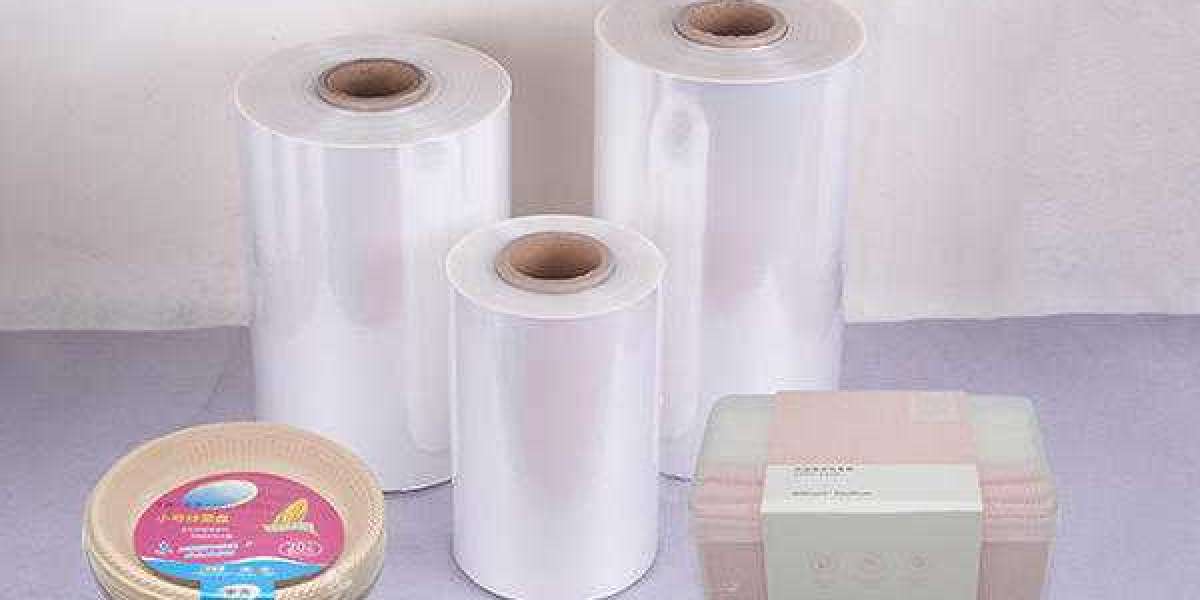In a world increasingly focused on sustainability, packaging materials are under scrutiny. Among the various options available, POF (Polyolefin) shrink film has emerged as a leading choice, combining durability, versatility, and eco-friendliness. This article explores the properties, applications, and benefits of POF shrink film, while highlighting its role in promoting sustainable practices in the packaging industry.
Understanding POF Shrink Film
POF shrink film is a type of plastic film made from polyolefins, specifically polyethylene and polypropylene. Its unique properties allow it to shrink tightly over products when exposed to heat, providing a secure and protective wrap. Unlike traditional PVC shrink films, POF offers several advantages, making it a preferred option for various applications.
Properties of POF Shrink Film
Clarity and Gloss: POF shrink film has excellent optical properties, providing a crystal-clear finish that showcases the product inside. This is particularly beneficial for retail packaging, where visual appeal can significantly influence consumer choices.
Strength and Durability: The film possesses high tensile strength and puncture resistance, ensuring that it can withstand handling and transportation without tearing or damaging the product. This durability also contributes to reduced waste.
Shrink Ratio: POF shrink film typically offers a high shrink ratio, allowing it to conform snugly around products of various shapes and sizes. This feature ensures optimal packaging, minimizing excess material usage.
Thermal Properties: POF films have a wide range of heat sealing temperatures, enabling efficient packaging processes. They can be heat sealed at lower temperatures compared to PVC films, resulting in energy savings during production.
Versatility: POF shrink film can be used in a variety of applications, from food packaging to retail products, and can be printed on for branding purposes. Its adaptability makes it a go-to choice for many manufacturers.
Applications of POF Shrink Film
The versatility of POF shrink film makes it suitable for numerous applications across various industries:
Food Packaging: POF shrink film is widely used in the food industry to package fresh produce, meat, and baked goods. Its excellent barrier properties help preserve the freshness and extend the shelf life of perishable items, reducing food waste.
Retail and Consumer Products: Many consumer goods, from electronics to cosmetics, are packaged in POF shrink film. The clear packaging not only protects the products but also enhances their visual appeal on retail shelves.
Industrial Applications: POF shrink film is employed in bundling and palletizing industrial products. Its strength and durability ensure that items remain secure during shipping and storage.
Promotional Packaging: The film can be used for promotional items, gift baskets, and bundles, allowing businesses to create attractive packages that catch the eye of consumers.
Sustainability and POF Shrink Film
Sustainability is a critical concern for the packaging industry, and POF shrink film addresses this issue in several ways:
1. Reduced Environmental Impact
POF shrink film is often produced with a lower environmental footprint compared to other materials, such as PVC. The production process for polyolefins typically requires less energy, resulting in lower greenhouse gas emissions. Additionally, POF films are recyclable, providing an option for waste management that can contribute to a circular economy.
2. Lightweight and Efficient
The lightweight nature of helps reduce transportation costs and fuel consumption during shipping. By minimizing the weight of packaging materials, companies can lower their overall carbon footprint. Furthermore, the efficient use of materials in POF shrink film packaging reduces waste, aligning with sustainable packaging goals.
3. Preservation of Resources
POF shrink film offers excellent barrier properties, which help preserve the freshness and quality of packaged goods. This not only reduces food waste but also optimizes resource use, as products maintain their value for a more extended period. By minimizing spoilage, POF shrink film contributes to more sustainable consumption practices.
4. Innovation in Recycling
Many manufacturers are working towards enhancing the recyclability of POF films. Innovations in material formulations and recycling processes aim to improve the recycling rates of polyolefin films. As technology evolves, the industry is moving toward a more sustainable future with increased emphasis on closed-loop recycling systems.
Comparing POF with Other Shrink Films
While POF shrink film has numerous advantages, it’s essential to compare it with other shrink film options available in the market:
PVC Shrink Film: PVC films are known for their excellent shrinkage properties; however, they have significant drawbacks in terms of environmental impact. PVC is not widely recyclable and often contains harmful additives, making it less favorable for sustainable packaging.
PE Shrink Film: Polyethylene (PE) shrink films are also popular for their recyclability. However, they typically offer lower clarity and strength compared to POF. While PE is an eco-friendlier option than PVC, POF films often provide a better balance of performance and sustainability.
PLA Shrink Film: Polylactic acid (PLA) films are biodegradable and made from renewable resources. However, they may not perform as well in high-temperature applications compared to POF. The choice between POF and PLA depends on the specific requirements of the packaging application.
The Role of Innovation in POF Shrink Film
Continuous innovation in the development of POF shrink film is driving its adoption in various industries. Manufacturers are investing in research and development to enhance the film's properties, such as improving its seal strength, developing more environmentally friendly formulations, and increasing its recyclability.
Advances in Production Technology
Advancements in production technologies are leading to more efficient manufacturing processes for POF films. These improvements not only reduce production costs but also minimize waste, making the entire lifecycle of the packaging material more sustainable. Manufacturers are exploring ways to incorporate recycled content into POF films, further enhancing their eco-friendly profile.
Customization and Branding
As brands increasingly prioritize sustainability, the ability to customize POF shrink film for branding purposes is gaining importance. Innovations in printing technology allow for high-quality graphics and branding on POF films without compromising their recyclability. This enables companies to communicate their sustainability efforts effectively while maintaining a visually appealing package.
POF shrink film stands out as a versatile and sustainable packaging solution, playing a significant role in the ongoing quest for eco-friendly materials in the packaging industry. Its combination of strength, clarity, and recyclability positions it as a preferred choice for manufacturers looking to reduce their environmental impact while delivering high-quality packaging.
As consumer awareness of sustainability grows, the demand for responsible packaging solutions will continue to rise. By embracing POF shrink film, businesses can not only enhance their product presentation and protection but also align with the evolving expectations of eco-conscious consumers. The future of packaging lies in innovations that prioritize sustainability, and POF shrink film is leading the way in this critical transformation.














